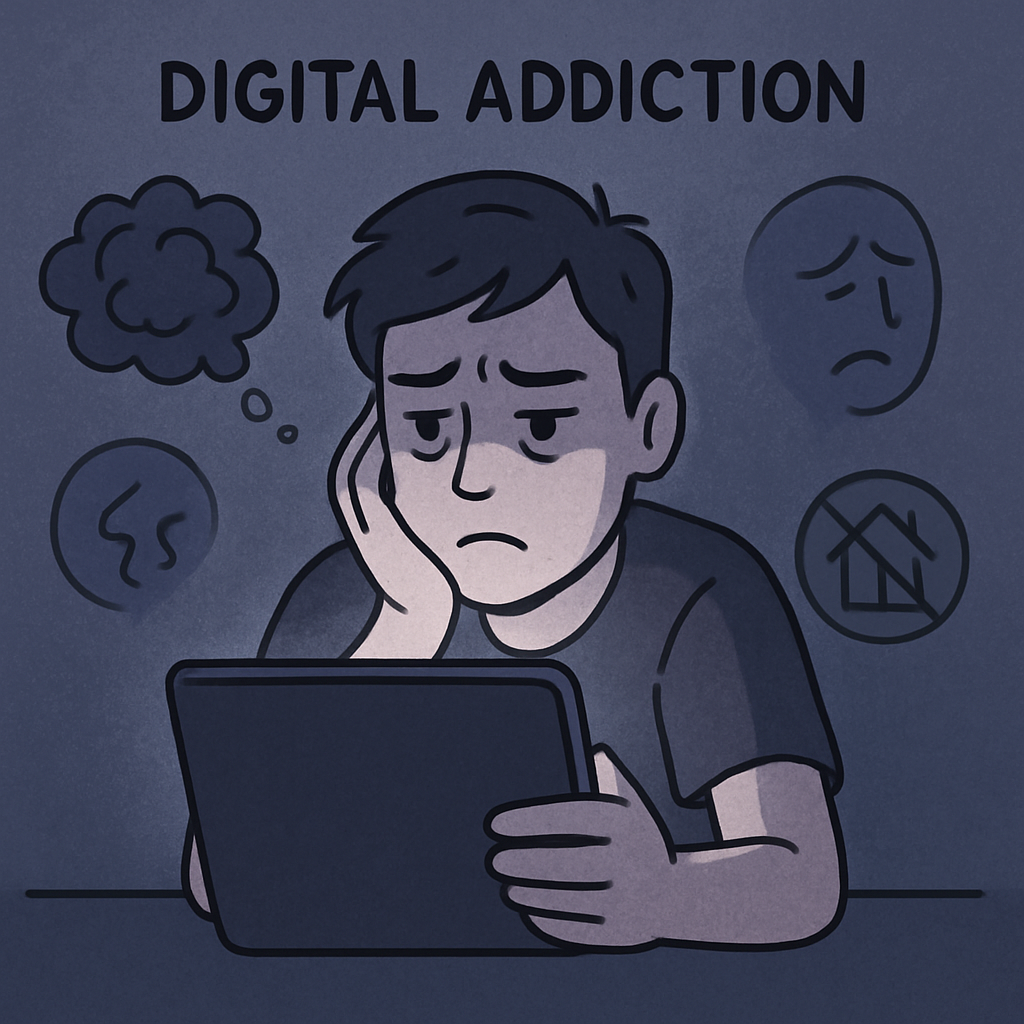In an increasingly digital world, screens have become an indispensable part of our daily lives. From smartphones and tablets to computers and gaming consoles, technology offers unparalleled convenience, connection, and entertainment. However, for a growing number of individuals, the line between healthy engagement and problematic overuse blurs, leading to what is often termed “digital addiction” or “screen addiction.” This phenomenon, characterized by compulsive and excessive use of digital devices and platforms, can have significant and often detrimental impacts on mental health, relationships, and overall well-being. Understanding the signs, causes, and consequences of digital addiction is the first step toward regaining balance and fostering a healthier relationship with technology.
What is Digital Addiction?
Digital addiction is not yet formally recognized as a clinical diagnosis in the Diagnostic and Statistical Manual of Mental Disorders (DSM-5), though “Internet Gaming Disorder” is listed as a condition for further study. However, the concept broadly refers to a behavioral addiction characterized by an excessive, compulsive, and often uncontrollable urge to use digital devices or platforms, despite negative consequences. It shares many characteristics with other behavioral addictions, such as gambling addiction, including [1]:
•Preoccupation: Constant thoughts about digital activities when not engaged in them.
•Tolerance: Needing to spend increasing amounts of time online or with devices to achieve the same level of satisfaction.
•Withdrawal Symptoms: Experiencing irritability, anxiety, sadness, or restlessness when unable to access digital devices.
•Loss of Control: Inability to cut down or stop digital use despite intentions to do so.
•Negative Consequences: Continued use despite knowing it causes problems in relationships, work/school, or physical health.
•Deception: Lying to family or friends about the extent of digital use.
•Escape: Using digital activities to escape from problems or relieve negative moods.
Digital addiction can manifest in various forms, including social media addiction, internet addiction, online gaming addiction, and compulsive use of streaming services or online pornography.
The Mental Health Impact of Screen Overuse
Excessive screen time and digital addiction can profoundly affect mental health in several ways:
1.Increased Anxiety and Depression: Constant exposure to curated, often unrealistic, online lives can lead to social comparison, feelings of inadequacy, and low self-esteem, contributing to anxiety and depressive symptoms. The pressure to maintain an online persona and the fear of missing out (FOMO) can also heighten anxiety [2].
2.Sleep Disturbances: The blue light emitted from screens suppresses melatonin production, a hormone essential for sleep. Using devices late at night can disrupt circadian rhythms, leading to insomnia, poor sleep quality, and daytime fatigue, which in turn exacerbates mood disorders [3].
3.Reduced Attention Span and Focus: Constant notifications, multitasking across apps, and the rapid-fire nature of online content can train the brain for quick shifts in attention rather than sustained focus. This can impair concentration, memory, and cognitive performance in real-world tasks [4].
4.Social Isolation and Relationship Strain: While digital platforms promise connection, excessive online interaction can paradoxically lead to real-world social isolation. Time spent online often displaces face-to-face interactions, leading to shallower relationships and feelings of loneliness. Conflicts can also arise in relationships due to neglected partners or family members [5].
5.Impact on Self-Esteem and Body Image: Social media, in particular, can foster unrealistic beauty standards and lifestyles, leading to negative body image, self-doubt, and a constant need for external validation through likes and comments.
6.Increased Irritability and Mood Swings: The constant stimulation and potential for negative online interactions can lead to heightened irritability, frustration, and emotional dysregulation, especially when digital access is restricted.
7.Academic and Occupational Impairment: Digital addiction can lead to procrastination, missed deadlines, poor academic performance, and reduced productivity at work due to distraction and time displacement.
Strategies to Regain Balance and Focus
Overcoming digital addiction and establishing a healthier relationship with technology requires conscious effort and strategic changes:
1.Digital Detox/Time-Outs: Periodically disconnect from all digital devices for a set period (e.g., a few hours, a day, or a weekend). This can help reset your relationship with technology and allow you to reconnect with offline activities.
2.Set Boundaries and Limits: Establish specific times for digital use and stick to them. Use app timers or phone settings to limit screen time for particular applications. Create “no-phone zones” in your home, such as the bedroom or dining table [6].
3.Turn Off Notifications: Constant pings and alerts are designed to pull your attention. Disable unnecessary notifications to reduce distractions and regain control over your focus.
4.Mindful Use: Before picking up your device, pause and ask yourself why you are doing so. Is it out of habit, boredom, or a genuine need? Practice intentional use rather than mindless scrolling.
5.Replace Digital Habits with Offline Activities: Identify healthy alternatives to screen time. Engage in hobbies, spend time in nature, read physical books, exercise, or connect with friends and family in person.
6.Create a “Digital Sunset”: Avoid screens for at least an hour before bedtime to improve sleep quality. Read a book, listen to music, or practice relaxation techniques instead.
7.Declutter Your Digital Environment: Unfollow accounts that make you feel inadequate, delete apps you rarely use, and organize your digital space to reduce visual clutter and temptation.
8.Seek Professional Help: If digital addiction is significantly impacting your life and you struggle to manage it on your own, consider seeking help from a therapist specializing in behavioral addictions. Cognitive Behavioral Therapy (CBT) can be particularly effective in identifying triggers and developing coping strategies [7].
Conclusion
Digital technology, while offering immense benefits, also presents a unique set of challenges to our mental health. Digital addiction and excessive screen time are not trivial concerns; they can lead to increased anxiety, depression, sleep disturbances, and impaired cognitive function. By understanding the profound impact of screen overuse and proactively implementing strategies to regain balance, we can cultivate a healthier relationship with technology. Prioritizing mindful engagement, setting clear boundaries, and seeking support when needed are essential steps toward protecting our mental well-being in the digital age. For personalized guidance on managing digital habits and supporting your mental health, visit accesshealthservices.org.



